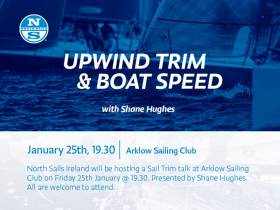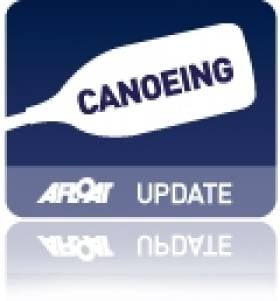Displaying items by tag: talk
North Sails Ireland Takes Sail Trim Talk To Arklow This Friday
North Sails Ireland will be hosting its successful Sail Trim presentation at Arklow Sailing Club from 7.30pm this coming Friday 25 January.
Following on from last week’s trim talk in Greystones, North Sails Ireland expert Shane Hughes will take Arklow Sailing Club members and visitors through the latest theory and techniques for improving and refining upwind trim and boat speed.
The presentation draws on the North U syllabus used around the world by North Sails representatives, and includes the use of North Sails' proprietary Sail Trim Simulator to help illustrate some of these trim solutions.
All are welcome to this Friday evening’s talk in Arklow, which will show how the angle of attack, depth, and twist combine to control upwind speed, pointing and balance; and how to change the trim (mainsail and jib) to improve performances as conditions change between light, moderate and heavy air.
Shooter to Give Talk on Record-Setting Kayak Voyage Round Ireland
Elaine 'Shooter' Alexander will be giving a public talk on her remarkable circumnavigation of Ireland by kayak in Co Fermanagh next month.
During the summer Afloat.ie tracked Shooter's progress as she battled against the elements to complete the round-Ireland route in 71 days - becoming the first woman to circumnavigate the island solo by kayak.
The Ulster woman had been training for over a year for the challenge, which was intended to raise funds for the Fermanagh-based SHARE, a charity that brings together disabled and non-disabled people in arts and outdoor-based activities.
On Saturday 22 October Shooter will be at the SHARE Centre in Lisnaskea to give a presentation and audio/visual show about her journey, followed by a question and answer session.
There will also be a meet-and-greet opportunity, as well as a chance to see the gear that she used on her epic voyage.
Tickets are priced at £7 for adults, £4 for children/OAPs/students/concessions, and £15 for a family ticket (2 adults/2 children).
Special B&B rates of £15 for adults and £10 for children are also available for those who want to make a night of it.
For all booking enquiries please contact [email protected].

























































